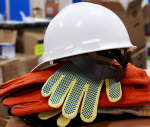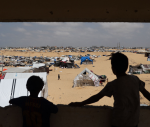You are here
SESAME, a triumph of scientific diplomacy
May 17,2017 - Last updated at May 17,2017
Today’s world is increasingly complex and moves at an ever-faster pace.
The threats to our security go beyond nation states’ traditional military concerns. Bombs are not the only danger. Climate change and cyber warfare are also grave threats, particularly since we move within a complex, sensitive network of international and regional alliances where trade is bound up with political and cultural issues.
Against this background, I am convinced that science can provide solutions to the great challenges facing the world.
Indeed, scientific diplomacy and international scientific cooperation are tremendous tools for developing and strengthening ties — be they interpersonal, political or commercial — and maintaining dialogue with certain countries with which other diplomatic channels are often fraught with difficulty because science is open and universal.
Science today is no longer a matter of national prestige, but rather a collective responsibility. This is why I decided to make scientific diplomacy one of the cornerstones of my term as European commissioner.
On May 16, I was particularly proud to take part in the inauguration of SESAME in Jordan.
SESAME is an extraordinary project and an example of what scientific excellence can achieve. It is a minor miracle without precedent in the region, one in which the EU has been an enthusiastic partner.
After coming up against myriad obstacles, today this highly advanced particle accelerator brings together scientists from across the Middle East.
In this troubled region, Iranians, Israelis, Palestinians and others are all working together under one roof, on the same project, towards the shared goal of science that knows neither borders nor nationality nor armed conflict.
The European Union has played a key role in the funding and development of this research centre in the Middle East, and with more than 20 million euros, was the largest donor.
Europeans can be proud of being part of this amazing scientific and diplomatic project.
I firmly believe that in order to maintain its ambition towards world leadership in science and innovation, Europe must also step up its international involvement.
And I am convinced that projects such as SESAME in Jordan are also key to integrating less developed countries into the global scientific community.
We are using scientific diplomacy to support our partners outside the European Union in their pursuit of prosperity.
We have signed association agreements for the Horizon 2020 European research programme with some of our neighbours, ranging from Georgia and Armenia to Tunisia.
In the Mediterranean, the commission has recently signed the first research partnership aimed at developing novel solutions for sustainable water management and food production.
This partnership, named PRIMA, currently brings together 19 European and Mediterranean countries and is funded to the tune of over 400 million euros.
It is a fine example of how pooling intellectual and financial resources can bring immense added value.
As well as bringing more clean water and food to local communities, this partnership will stimulate the region’s economy and create jobs.
Research and innovation thus have a key role to play in combating the causes of forced migration.
Indeed, research is part of a wide spectrum of policies, ranging from development to health, that is helping to forge societies better able to face the great global challenges.
In this context, scientific diplomacy and international scientific cooperation must no longer be seen as mere extras on the margins of high-level policy or as the poor relation of international diplomacy.
On the contrary, for the European Union, they are now part and parcel of our daily work, aimed at pushing the boundaries of scientific excellence in Europe and beyond and responding more effectively to global challenges.
Just like the ambitious architects of the European project after World War II, by uniting around a shared project, the SESAME partner countries have built a haven of peace and science in the midst of a region riven by past and present conflicts.
The writer is European commissioner for research, science and innovation. He contributed this article to The Jordan Times.












